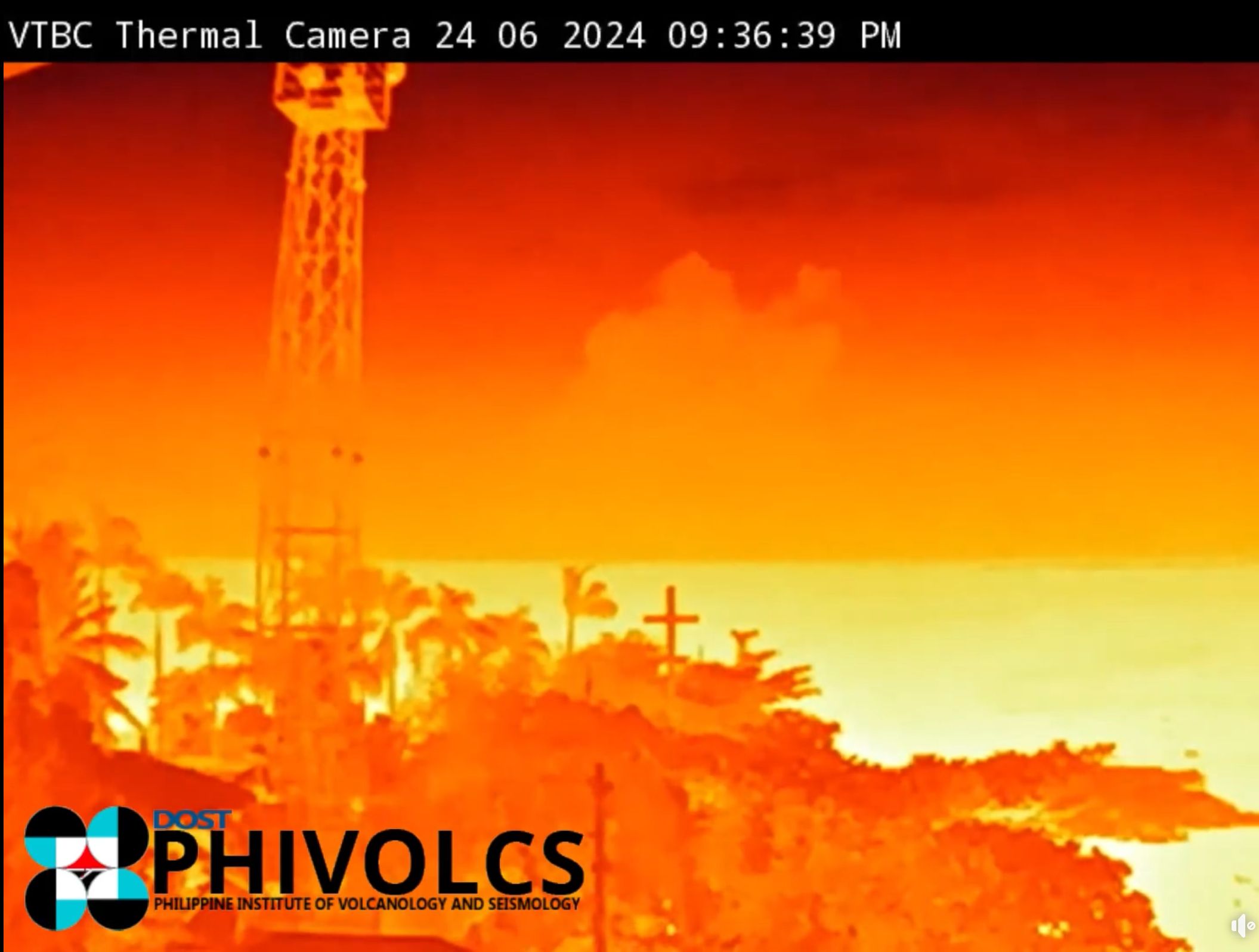Phivolcs records 'weak' steam-driven eruption at Taal Volcano

The Philippine Institute of Volcanology and Seismology (Phivolcs) detected a “weak” phreatic or steam-driven eruption at Taal Volcano on Monday evening, June 24.
In an advisory released early Tuesday, June 25, Phivolcs said the volcanic activity occurred at 9:30 p.m. and lasted two minutes, as observed through visual and seismic infrasound records of the Taal Volcano Network.
The activity produced steam-laden plumes reaching 600 meters high.
During its 24-hour monitoring of the active volcano, Phivolcs recorded one volcanic tremor event, lasting 36 minutes.
Phivolcs said the phreatic activity is likely driven by ongoing emission of hot volcanic gases and may be followed by similar events, although background levels of volcanic earthquake activity and ground deformation suggest that the unrest is unlikely to progress into a magmatic eruption.
It pointed out that Taal Volcano continues to emit significant volcanic sulfur dioxide (SO2), averaging 4,641 tons per day when it was last measured on June 20.
However, average SO2 emissions since January have been 7,967 tons per day, it added.
Alert Level 1 stays
Phivolcs said Taal Volcano remains under Alert Level 1, which means it is still in an abnormal state and should not be interpreted as having ceased unrest or the threat of eruptive activity.
Phivolcs added that sudden steam-driven or phreatic explosions, volcanic earthquakes, small amounts of ashfall, and potentially fatal buildups or releases of volcanic gas are all potential threats to Taal Volcano Island (TVI) at Alert Level 1.
It also warned the public that the degassing of high concentrations of volcanic SO2 may pose long-term health risks to communities around Taal Caldera, which are frequently exposed to volcanic gas.
Exercise precautions
Phivolcs reminded the public that entry into TVI, which is a permanent danger zone, particularly near the main crater and the Daang Kastila fissure, is strictly prohibited due to ongoing hazards.
“Local governments should continuously monitor and assess their communities’ preparedness, as well as implement appropriate response measures, to mitigate hazards posed by long-term degassing and related phreatic activity,” it said.
“Civil aviation authorities must advise pilots to avoid flying close to the volcano because airborne ash and ballistic fragments from sudden explosions, as well as wind-remobilized ash, can pose a threat to aircraft,” it added.